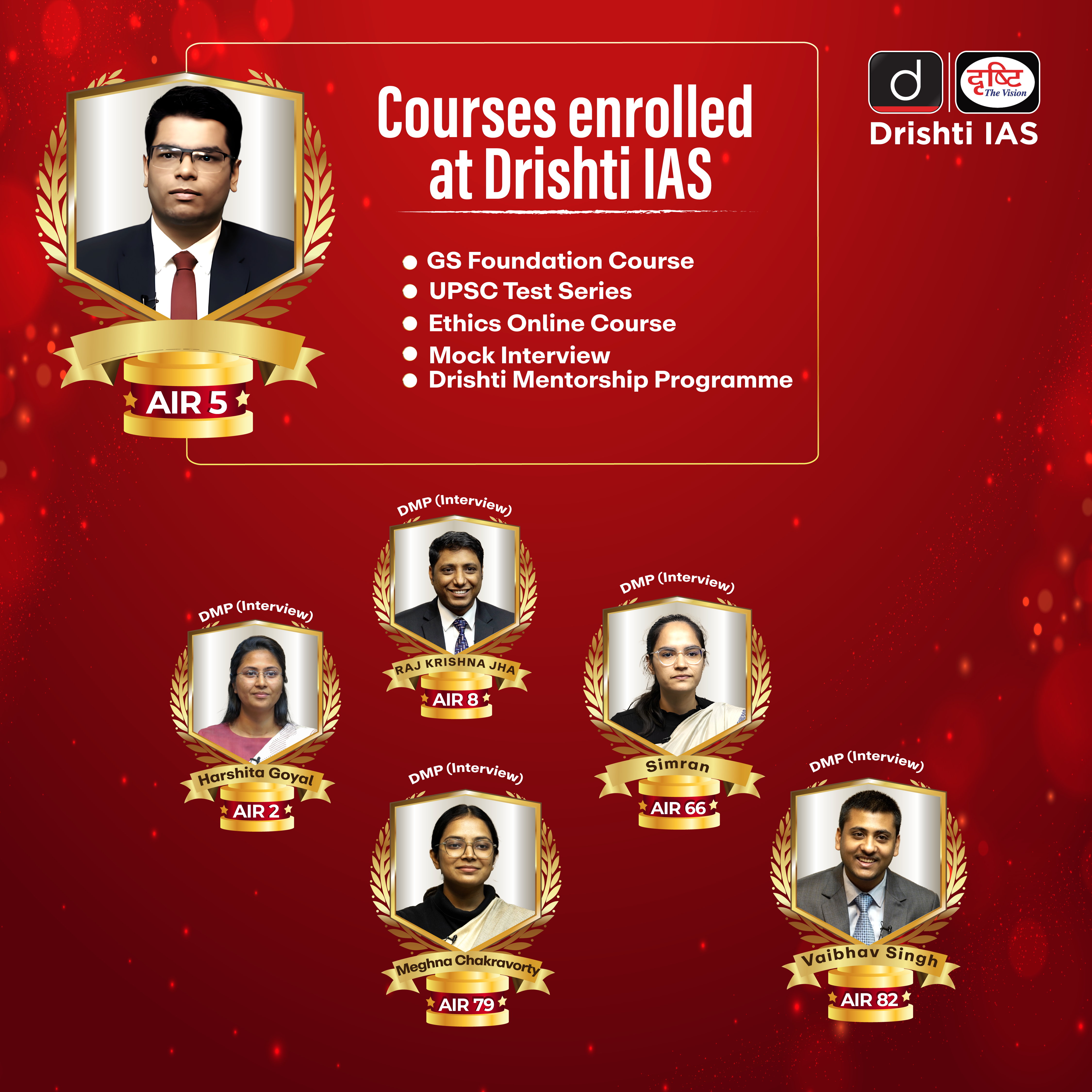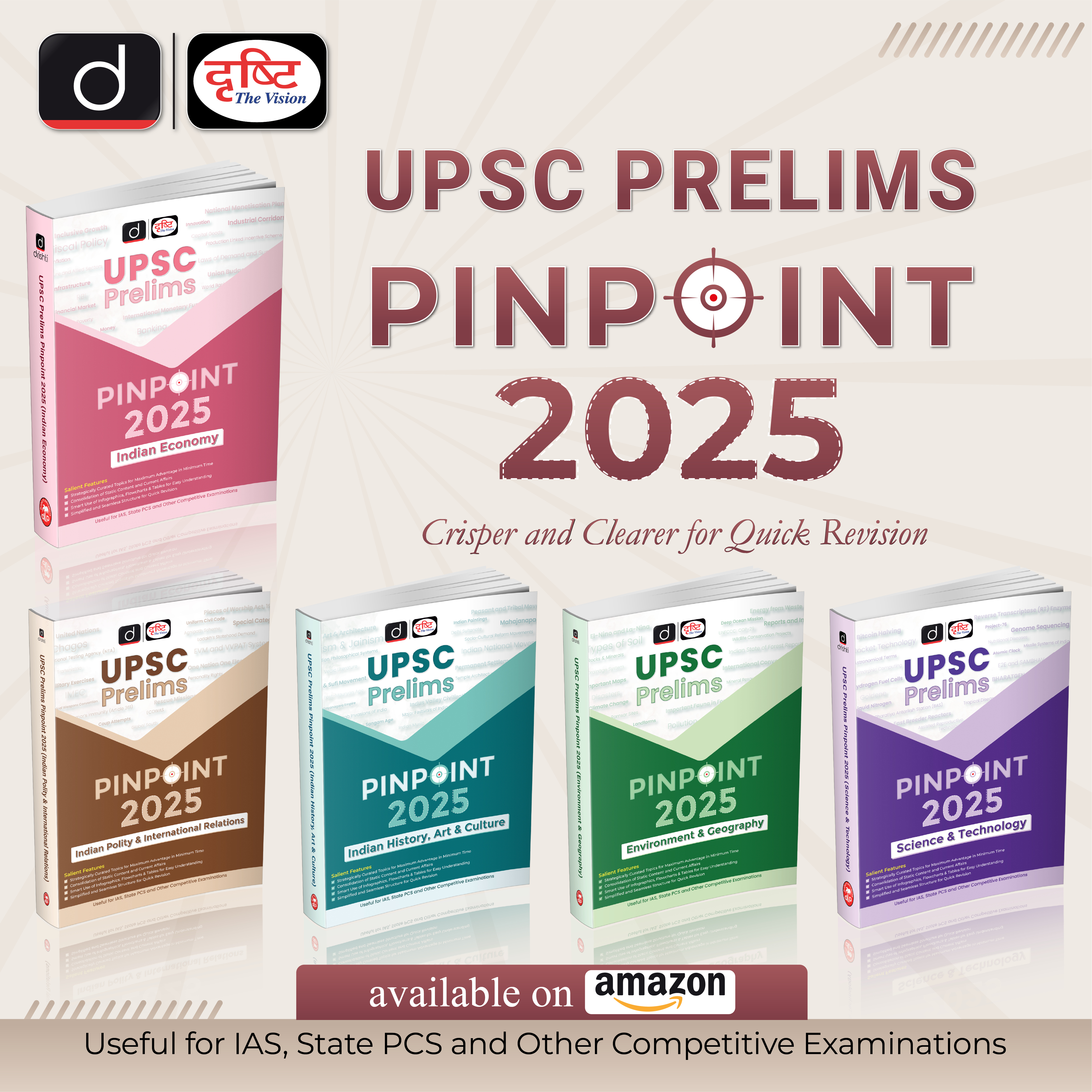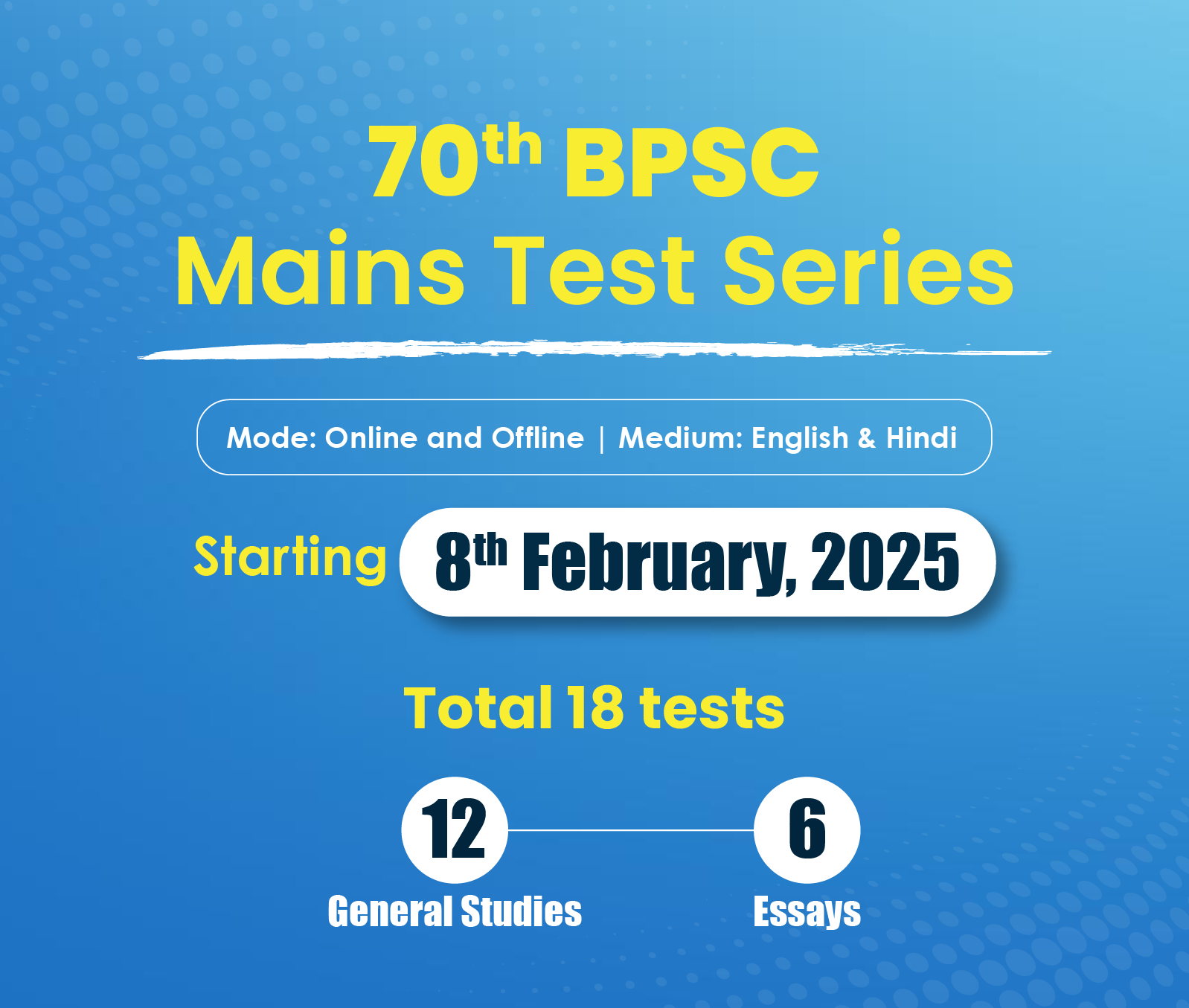Bihar Switch to Hindi
'Ayushman Bharat' Cards Issued in Bihar
Why in News?
Recently, the Bihar Government has decided to provide "free medical treatment up to ₹5 lakh every year to all ration card holders of the state under the Ayushman Bharat Scheme.
Key Points
- Ayushman Bharat cards were issued to 1.03 crore families in just six days (till 11 am of March 8).
- All ration card holders covered under the National Food Security Act (NFSA), 2013 get 5 kg of rice, and can avail free treatment up to ₹5 lakh every year.
- According to data compiled by the state health department, the maximum number of Ayushman Bharat cards at 5,99,609 were issued in Siwan district in the six-day campaign, followed by 5,44,018 in Muzaffarpur, 5,00,292 in Patna and 4,72,977 in Madhubani.
- Districts where less than one lakh Ayushman Bharat cards were issued in the special campaign are Munger (99,984), Kishanganj (76,861), Sheikhpura (58,132) and Sheohar (47,288).
Ayushman Bharat-Pradhan Mantri Jan Arogya Yojana (PM-JAY)
- PM-JAY is the world’s largest health insurance scheme fully financed by the government.
- Launched in February 2018, it offers a sum insured of Rs.5 lakh per family for secondary care and tertiary care.
- Health Benefit Packages covers surgery, medical and day care treatments, cost of medicines and diagnostics.
- Beneficiaries:
- It is an entitlement-based scheme that targets the beneficiaries as identified by latest Socio-Economic Caste Census (SECC) data.
- The National Health Authority (NHA) has provided flexibility to States/UTs to use non- Socio-Economic Caste Census (SECC) beneficiary family databases with similar socio-economic profiles for tagging against the leftover (unauthenticated) SECC families.
- Funding:
- The funding for the scheme is shared – 60:40 for all states and UTs with their own legislature, 90:10 in Northeast states and Jammu and Kashmir, Himachal and Uttarakhand and 100% Central funding for UTs without legislature.
- Nodal Agency:
- The National Health Authority (NHA) has been constituted as an autonomous entity under the Society Registration Act, 1860 for effective implementation of PM-JAY in alliance with state governments.
- The State Health Agency (SHA) is the apex body of the State Government responsible for the implementation of AB PM-JAY in the State.
National Food Security Act (NFSA), 2013
- It was notified on 10th September, 2013.
- Its objective is to provide for food and nutritional security in the human life cycle approach, by ensuring access to adequate quantities of quality food at affordable prices to people to live a life with dignity.
- It covers 75% of the rural population and upto 50% of the urban population for receiving subsidized foodgrains under Targeted Public Distribution System (TPDS).
- Overall, NFSA caters to 67% of the total population.
- Eligibility:
- Priority Households to be covered under TPDS, according to guidelines by the State government.
- Households covered under existing Antyodaya Anna Yojana.
- Provisions:
- 5 Kgs of foodgrains per person per month at Rs. 3/2/1 per Kg for rice/wheat/coarse grains.
- The existing AAY household will continue to receive 35 Kgs of foodgrains per household per month.
- Meal and maternity benefit of not less than Rs. 6,000 to pregnant women and lactating mothers during pregnancy and six months after the child birth.
- Meals for children upto 14 years of age.
- Food security allowance to beneficiaries in case of non-supply of entitled foodgrains or meals.
- Setting up of grievance redressal mechanisms at the district and state level.
Rajasthan Switch to Hindi
Rajasthan Signs MoUs To Boost Energy Sector
Why in News?
Recently, the Rajasthan government signed 5 Memorandum Of Understandings (MOUs) worth Rs 1.60 lakh crore to boost energy production, strengthen the energy transmission system and establish new projects for the production of thermal and renewable energy in the state.
Key Points
- According to the official sources, 6 MOUs have been signed between the top officials of 3 power corporations and 6 central undertakings of the state for the investment of Rs 1.60 lakh crore for the development of the energy sector, which includes various projects of power generation.
- Under these agreements:
- An MoU will be signed between Rajasthan Vidyut Utpadan Nigam Limited (RVUN) along with Coal India Limited, the National Thermal Power Corporation (NTPC) and Neyveli Lignite Corporation (NLC) India for thermal based projects of 3325 MW capacity.
- To strengthen the power transmission system in the state, there will be an agreement for investment of Rs 10 thousand crore between Rajasthan Electricity Transmission Corporation and Power Grid Corporation.
- A Power Purchase Agreement (PPA) will also be signed between Rajasthan Urja Vikas Nigam and SJVN Green Energy for the supply of power through 600 MW solar power projects.
- There will be an MoU between the Rural Electrification Corporation and the state government for the development of the infrastructure sector.
Chhattisgarh Switch to Hindi
PM Launches Mahtari Vandan Scheme In Chhattisgarh
Why in News?
Recently, The Prime Minister inaugurated the 'Mahtari Vandan' scheme in Chhattisgarh to provide monetary assistance to women.
Key Points
- Under the scheme, the state government will provide financial assistance of Rs 1000 per month to eligible married women of the state as monthly Direct Benefit Transfer (DBT).
- The first installment of ₹ 655 crore was deposited into the bank accounts of beneficiaries (married women).
- The scheme has been envisioned to ensure economic empowerment of women, provide them financial security, promote gender equality and strengthen the decisive role of women in the family.
- The scheme will provide benefits to all eligible married women of the state who are above 21 years of age as of January 1, 2024.
- Widows, divorced, and deserted women will also be eligible for this scheme. Around 70 lakh women will benefit from the scheme.
Direct Benefit Transfer Scheme
- It has been visioned as an aid for simpler/faster flow of information and funds to the beneficiaries and to reduce the fraud in the delivery system.
- It is a mission or an initiative by the government of India started on 1st January 2013 as a way to reform the government delivery system.
- Central Plan Scheme Monitoring System (CPSMS), the earlier version of the Public Financial Management System (PFMS), of the Office of Controller General of Accounts, was chosen to act as the common platform for routing of the Direct Benefit Transfer.
- Components of DBT: Primary components in the implementation of DBT schemes include Beneficiary Account Validation System, a robust payment and reconciliation platform integrated with Reserve Bank of India (RBI), National Payments Corporation of India (NPCI), Public & Private Sector Banks, Regional Rural Banks and Cooperative Banks (core banking solutions of banks, settlement systems of RBI, Aadhaar Payment Bridge of NPCI) etc.
- There are 310 Schemes from 53 Ministries under DBT. Some important schemes are:
- Pradhan Mantri Fasal Bima Yojana, National Food Security Mission, Pradhan Mantri Krishi Sinchai Yojana, PM KISAN, Swachh Bharat Mission Gramin, Atal Pension Yojana, National AYUSH Mission.
- Aadhaar is not mandatory in DBT schemes. Since Aadhaar provides unique identity and is useful in targeting the intended beneficiaries, Aadhaar is preferred and beneficiaries are encouraged to have Aadhaar.
Uttar Pradesh Switch to Hindi
PM Launches Projects Worth Over Rs. 34,000 Crore
Why in News?
Recently, the Prime Minister of India inaugurated numerous development initiatives totalling ₹34,000 crore.
Key Points
- In a significant boost to the civil aviation sector, the Prime Minister initiated the groundwork for multiple airport projects nationwide.
- He unveiled 12 new Terminal Buildings at airports including Pune, Kolhapur, Gwalior, Jabalpur, Delhi, Lucknow, Aligarh, Azamgarh, Chitrakoot, Moradabad, Shravasti, and Adampur.
- He laid the foundation stones for three new Terminal Buildings at Kadapa, Hubballi, and Belagavi Airports.
- He also inaugurated the Light House Project (LHP), which has facilitated the construction of over 2000 affordable flats with modern amenities.
- The Prime Minister dedicated to the nation 744 rural road projects valued at more than ₹3700 crore, constructed under the Pradhan Mantri Gram Sadak Yojana.
- These projects encompass a cumulative length of over 5,400 kilometers of rural roads in Uttar Pradesh, benefiting approximately 59 districts in the state.
Pradhan Mantri Gram Sadak Yojana
- Launched on: 25th December, 2000.
- Objective: To provide connectivity, by way of an all-weather road to unconnected habitations.
- Eligibility: Unconnected habitations of designated population size (500+ in plain areas and 250+ in North-Eastern States, Himalayan States, Deserts and Tribal Areas as per 2001 census) in the core network for uplifting the socio-economic condition of the rural population.
- An Unconnected Habitation is one with a population of designated size located at a distance of at least 500 meters or more (1.5 km of path distance in case of Hills) from an All-weather road or a connected Habitation.
- Core Network: It is that minimal Network of roads (routes) that is essential to provide Basic access to essential social and economic services to all eligible habitations in the selected areas through at least single all-weather road connectivity.
- Latest Funding Pattern: The fund allocation to states has been made in subsequent years commensurate with the value of projects sanctioned to states.
- The Union Government bears 90% of the project cost in respect of projects sanctioned under the scheme in North-Eastern and Himalayan States, whereas for other states the Union Government bears 60% of the cost.
- Construction of Rural Roads: The Rural Roads constructed under the PMGSY will be in accordance with the provision of the Indian Roads Congress (IRC).
- IRC is the Apex Body of Highway Engineers in the country.
- The IRC was set up in 1934.
- PMGSY - Phase I
- PMGSY - Phase I was launched in December, 2000 as a 100 % centrally sponsored scheme.
- Under the scheme, 1,35,436 habitations were targeted for providing road connectivity and 3.68 lakh km. for upgradation of existing rural roads in order to ensure full farm to market connectivity.
- PMGSY - Phase II
- The Government of India subsequently launched PMGSY-II in 2013 for upgradation of 50,000 Kms of existing rural road network to improve its overall efficiency.
- While the ongoing PMGSY - I continued, under PMGSY phase II, the roads already built for village connectivity were to be upgraded to enhance rural infrastructure.
- The cost was shared between the centre and the states/UTs.
- PMGSY - Phase III
- Phase III was approved by the Cabinet during July 2019.
- It gives priorities to facilities like:
- Gramin Agricultural Markets (GrAMs)
- GrAMs are retail agricultural markets in close proximity to the farm gate that promote and service a more efficient transaction of the farmers’ produce.
- Higher Secondary Schools and
- Hospitals.
- Gramin Agricultural Markets (GrAMs)
- Under the PMGSY-III Scheme, it is proposed to consolidate 1,25,000 Km road length in the States. The duration of the scheme is 2019-20 to 2024-25.
Madhya Pradesh Switch to Hindi
Roadshow in Stockholm
Why in News?
Recently, Madhya Pradesh Tourism Board announced its upcoming roadshow event tailored for the travel trade industry in Stockholm, Sweden.
Key Points
- This exclusive roadshow presents an exceptional opportunity for travel professionals, media, bloggers, and influencers to delve into the diverse tourism landscape of Madhya Pradesh, India, and forge mutually beneficial partnerships with local tourism authorities.
- Through this roadshow, Madhya Pradesh Tourism aims to:
- Highlight the state's key tourism destinations, including The United Nations Educational, Scientific and Cultural Organization (UNESCO) World Heritage Sites including the Khajuraho Group of Monuments, the Sanchi Stupa, and the Bhimbetka Rock Shelters, national parks, wildlife sanctuaries, historical landmarks, and vibrant cultural festivals.
- Showcase sustainable tourism practices and conservation efforts undertaken by Madhya Pradesh Tourism to preserve the state's natural and cultural heritage.
- Foster partnerships and collaborations between Madhya Pradesh Tourism and Swedish travel agencies, tour operators, media, and influencers to promote tourism exchange between the two regions.
- Provide insights into the unique travel experiences and opportunities available in Madhya Pradesh, such as wildlife safaris, cultural immersion, adventure tourism, and eco-tourism initiatives.
Madhya Pradesh Tourism Board (MPTB)
- It was established in 2017 with an objective to promote tourism in Madhya Pradesh.
- The core objectives of the Board are development of tourism with public, private partnership in a sustainable manner, investor facilitation, skill- development, publicity/promotion of tourist destinations nationally & internationally, identification and development of tourism infrastructure.
Khajuraho Group of Monuments (1986)
- These temples were built during the Chandella dynasty, which reached its pinnacle between 950 and 1050.
- Only 20 temples remain, belonging to two different religions namely-Hinduism and Jainism, including the famous Temple of Kandariya decorated with intricately and beautifully carved sculptures.
Rock Shelters of Bhimbetka (2003)
- These shelters are located within the foothills of Vindhya range, on the southern edge of the central Indian plateau.
- Unearthed in the form of five clusters of natural rock shelters exhibiting paintings that date back to the Mesolithic, and other periods succeeding it.
- The cultural traditions of the inhabitants in surrounding areas are very similar to those displayed in the paintings.
Buddhist Monuments at Sanchi (1989)
- It is the oldest Buddhist sanctuary in existence and was a major Buddhist centre in India until the 12th century A.D.
- Consists of monolithic pillars, palaces, temples and monasteries) all in different states of conservation most of which date back to the 2nd and 1st centuries B.C.
Uttarakhand Switch to Hindi
Uttarakhand Launches Projects Worth Rs 8,000 Crore
Why in News?
Recently, Uttarakhand Chief Minister virtually launched 122 projects worth Rs 8,275.51 crore.
Key Points
- Among these, Rs 1048.15 crore’s worth of projects from 11 departments were inaugurated, while foundation stones were laid for Rs 7227.36 crore’s worth of schemes from 15 departments.
- The CM marked the introduction of prepaid meters by the energy department and distributed tool kits to registered workers under the Building and Other Construction Workers Welfare Board.
- He distributed allotment letters for solar energy projects among entrepreneurs and beneficiaries of the Mukhyamantri Solar Swarozgar Yojana.
- In pursuit of enhancing Uttarakhand’s economic prowess, the CM outlined plans to double the Gross State Domestic Product (GSDP) within five years.
- He articulated strategies to foster innovation and best practices at the district level by 2025.
Mukhyamantri Solar Swarozgar Yojana
- Uttarakhand launched the Mukhya Mantri Saur Swarojgar Yojana for self-employment by solar energy farming.
- The aim of the scheme is to promote the production of green energy and to provide self-employment opportunities to the youth of the State and returning migrants.
- Each beneficiary of this scheme will be allocated solar plants of 25 kilowatts.








%20MPPCS%202025%20Desktop%20E.jpg)
%20MPPCS%202025%20Mobile%20E%20(1).jpg)










.png)
.png)











 PCS Parikshan
PCS Parikshan

